[hand coffee brewing skills] how to stir to make your hand brew coffee better?
For professional baristas, please follow the coffee workshop (Wechat official account cafe_style)
Hand-brewed coffee is really a great idea in the coffee industry. through smooth water injection, the coffee powder rolls gently in the filter cup to extract the charming flavor, penetrating the filter paper and quietly dripping the clear and transparent wine-red liquid, everything looks so elegant and fresh, full of ritual. The most important thing, of course, is that even if you are not a professional barista and do not need too expensive equipment, you can easily brew hand-brewed coffee at home that is not inferior to that produced by a professional cafe.
Of course, like all good things, a perfect cup of hand-made coffee is not easy to get. Today, I'm going to tell you about the extraction technique of hand-made coffee-stirring.
Many people say that a smooth and supple cup of hand-made coffee is inseparable from stirring. So, what is stirring? How do you stir it? The important thing is, can stirring really improve the quality of our extraction? Let's see.
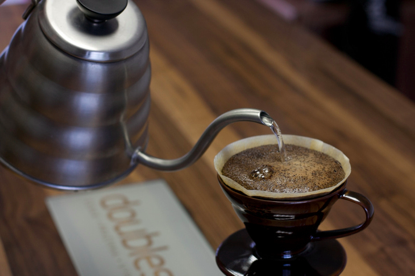
What is stirring?
The question may be a little stupid, but let's start with the basics.
The brewing process of hand-brewed coffee can be divided into two parts:
1. Steaming. Wet the coffee powder with about twice the weight of the water, the function is to activate the activity of the coffee powder, exhaust in advance, let the coffee powder expand to form a good extraction structure.
2. Water injection filtration. Pour the remaining water into the filter cup, extract the various flavor substances from the coffee, and filter to get the clear coffee liquid.
Of course, there will be a slight stirring state in the process of water injection, but this is obviously not the point we are going to talk about today.
To put it simply, stirring is to make the coffee powder tumble and move in the water by applying a mild interference in the above two processes.
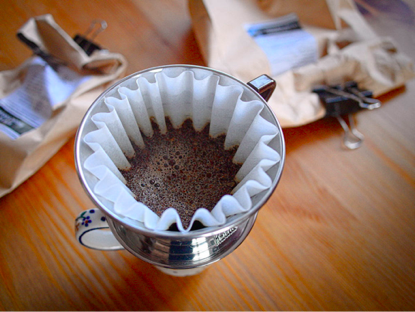
Why stir?
If we want to get a cup of hand-brewed coffee with perfect taste, then the premise is that the whole extraction process must be uniform and consistent.
If the degree of extraction of the coffee powder in the filter cup is different between the upper and lower layers, edges and centers, then it is obviously impossible for you to control the flavor of the final extraction and copy the performance of each time. Even with the most perfect brewing parameters, all you get in the end is a cup of "complex" and turbid coffee with most of the extraction normal, some sour due to insufficient extraction, and some bitter or even woody due to over-extraction.
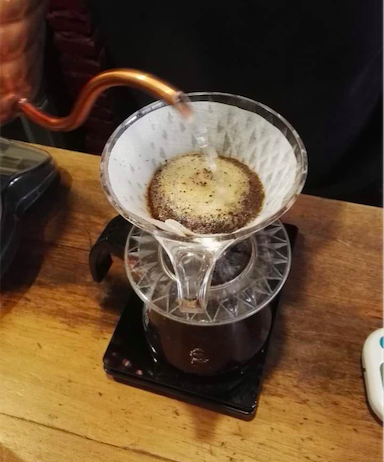
Another reason for stirring is to improve the extraction rate.
There is a very common problem with the filter cup after water injection, which is the "channel effect". When professional baristas hear this term, they should think of the problem of pressed powder perforation in Italian concentrated extraction.
In fact, in the process of hand punching, there will also be the phenomenon of "perforation".
Take great pains to explain again: the "channel effect" is due to the inertia of water. In the process of passing through the coffee powder layer, it usually chooses a thin, easy-to-pass channel to flow through, so that the coffee powder near the channel is extracted too deeply. Coffee powder elsewhere is underextracted.
Of course, the difference between hand brewing and Italian concentration is that the channel produced by hand brewing coffee is usually above the powder layer-especially in the middle and back of the extraction, where most of the coffee powder is exhausted, absorbs water and sinks in the lower layer of the filter cup, and when the water surface is higher than the powder layer, the water can easily pass through the surrounding filter paper, along the gap in the ribs, directly bypassing the coffee powder flowing down the filter cup.
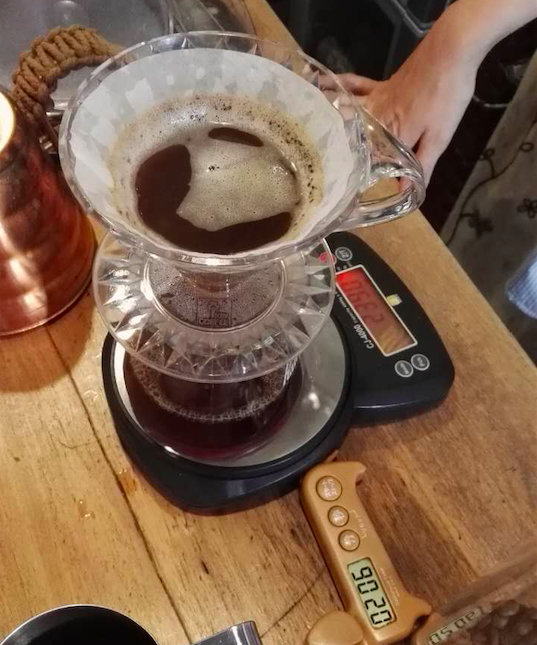
In addition, the uneven accumulation and non-uniform immersion of coffee powder layer will also produce channels, and the speed of water injection is too fast or uneven, which will also aggravate the generation of channels. And the way most people deal with these channel effects is to "cut off water". The technique we are talking about today, "stirring", is naturally another way.
Stirring can disperse coffee powder, promote uniform contact and extraction between coffee powder and water, and at the same time make the extract flow in the filter cup to avoid local "dissolution and saturation".
Of course, this is not the only important factor to ensure the uniformity of extraction. If you drink the same flavor of hand-brewed coffee every day, you should also regulate your ratio of water to powder, the temperature of brewing water, the choice of filter paper for filter cups, the method and speed of pouring water, water quality, grinding degree and brewing time. As a matter of fact, this is really difficult.
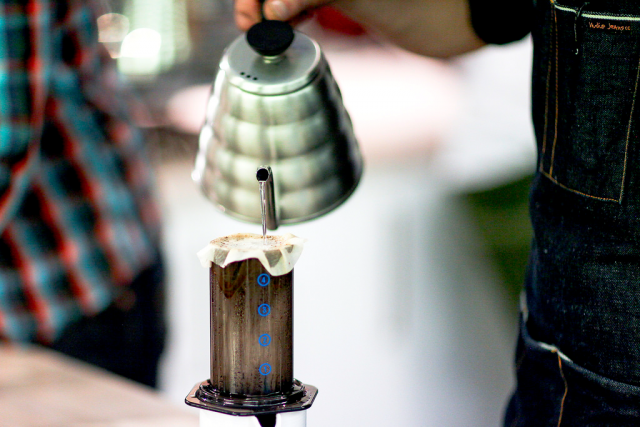
How do you stir it?
Stirring can be done at several times and in several ways. For example: when steaming, the first time of water injection, the last time the water injection is finished.
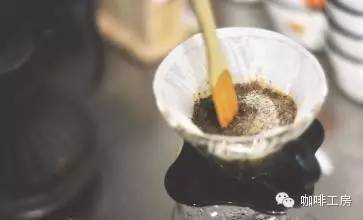
You may have heard of the Nordic style of "big current stirring", which is a relatively common way of "stirring". Through the impulse of a large current, the coffee powder at the bottom of the powder layer is stirred up to form a tumble in the water. This kind of water injection technique breaks the fixed thinking that "hand water injection can not rush to the filter paper" and directly flushes the coffee powder with too high edge back below the liquid level.
In addition to the most direct mixing with a wooden stick, you can also stir by tapping the filter cup, rotating the injection, or even shaking it manually.
Which mixing method do professional baristas choose?
The most famous and influential is Matt Perger, the champion of the 2012 World Cooking Competition, whose handmade demonstration video opened up a new field of vision in the handwashing world-until then, the manual stirring genre has not been recognized and understood by most people.
Let's start with the video:
If you can notice the V60 filter cup he uses, in fact, the rib design of the V60 filter cup itself allows the water to rotate along the spiral ribs, prolonging the time for the flow to flow down, and concentrating the flow at the same time, which itself is a slight "stirring" effect.
In addition, we can also shake the filter cup by hand to achieve a stirring effect. Such as:
Or turn and cook like this:
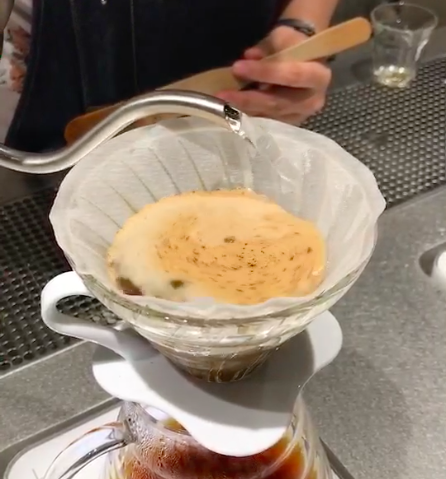
Applicability of stirring
The function and effect of stirring determine that it is usually combined with fine grinding, high water temperature and fast cooking. At the same time, although the flavor of the stirred coffee has become more obvious, its taste has been weakened a lot. And this method has high requirements for the quality of coffee beans, if you use poor coffee beans, it will only infinitely magnify its bad flavor. In addition, because the grinding degree of coffee powder required by this method is very fine, coupled with sufficient stirring, it is easy to over-extract improperly. We still have to fully grasp the properties of their own beans, and then decide whether to stir and how to stir.
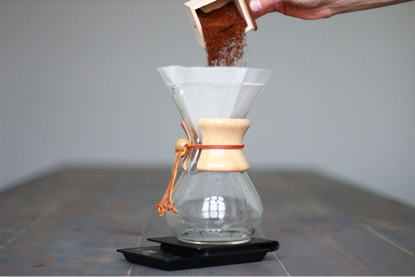
Last
All I have said above is to give you the courage to try. Whether you are a barista, a coffee lover or a novice, you can try it. Try to stir, try not to stir; test it yourself, share it with friends, or taste it with your customers.
Find out the differences, taste the nuances in the coffee, and keep trying the degree of grinding and water injection techniques, find the best combination, and copy the whole process until your results are basically the same.
The wonderful thing about hand-brewing coffee is that you can keep trying, and there are never absolute standards and constant tutorials. So jump straight into the pit and try stirring to see if it suits you.
Important Notice :
前街咖啡 FrontStreet Coffee has moved to new addredd:
FrontStreet Coffee Address: 315,Donghua East Road,GuangZhou
Tel:020 38364473
- Prev
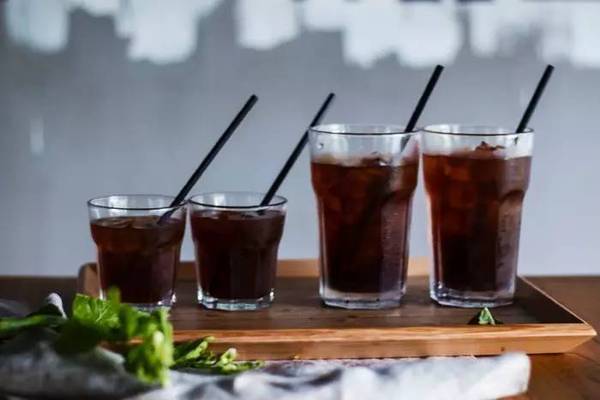
New enjoyment in the morning: two steps to teach you to finish cold coffee
The exchange of professional baristas please follow the coffee workshop (official Wechat account cafe_style) Coffee culture has been dominant in recent years, and cold coffee has become a hot topic in recent years. Cold coffee is a perfect combination of stronger coffee, more caffeine and less bitterness than ordinary hot coffee after 12 hours of soaking overnight. This one sounds like a fair fee.
- Next
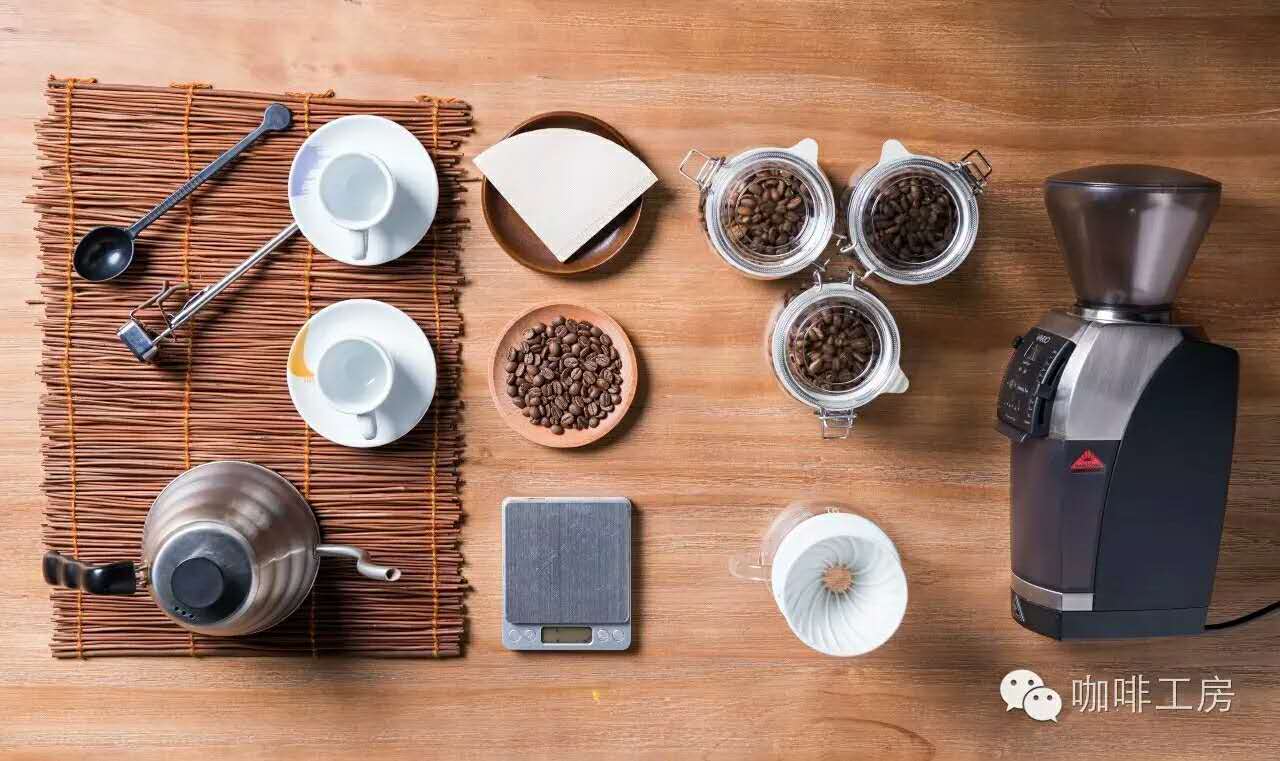
Translation of the chapter selected from the Handbook of Professional baristas | Chapter 6 drip coffee
Professional baristas Please pay attention to the freshness of the coffee workshop (Wechat official account cafe_style) trickle coffee is notorious all over the world for a variety of reasons. The drip-filter coffee sold in many places has been heated in a pot for a lifetime and tastes light and bitter. There are also some boutique coffee suppliers who have made the mistake of operating multiple types of coffee beans at the same time.
Related
- What is the meaning of lactic acid fermentation with coffee bean treatment?
- How to judge the state of foam by sound?
- How does the latte pull out the unicorn pattern? Come to get for a little trick to improve the flower pull!
- Will flower pulling affect the taste of the latte?
- Do you know the history of coffee?
- The difference between honey treatment and sun washing what is raisin honey treatment?
- What kind of milk can a novice use to make coffee foam to keep the foam longer? The correct method and skills of milking tutorial sharing
- Why do washed coffee beans taste sour? Flavor characteristics of washed Coffee
- Introduction to the skill of how to practice the size and height of water injection around the circle of hand-brewed coffee
- How do beginners practice coffee flower drawing from scratch?

